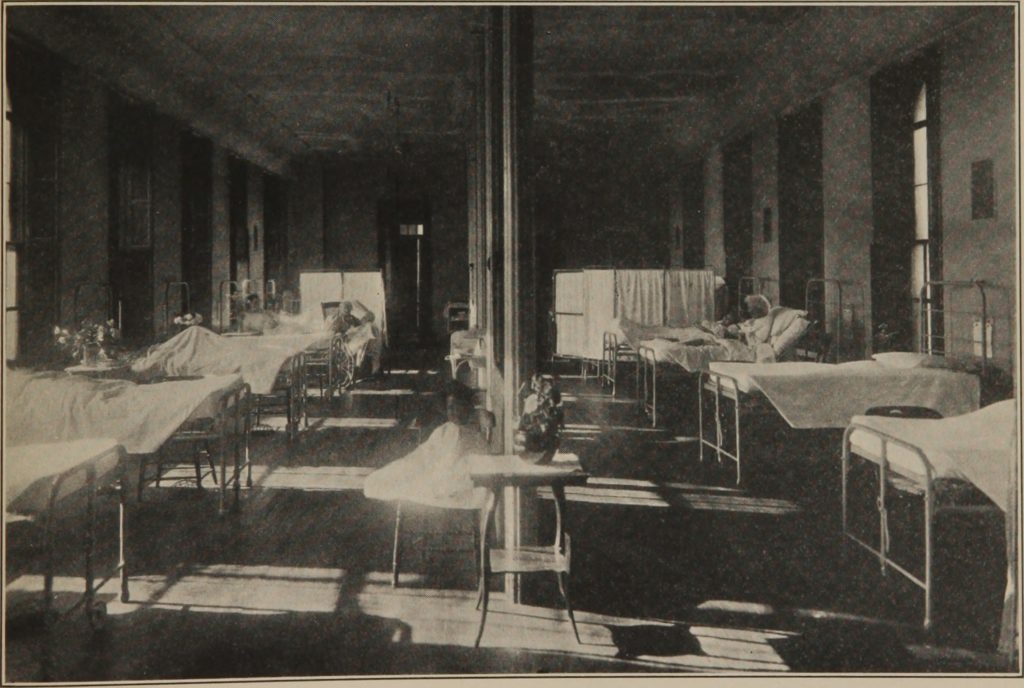A doctor walks into a town of one-hundred people, and finds that half of them are pale, feverish, and vomiting blood. The physician calls out to a community leader, “Send for help, you have an epidemic on your hands.” The community leader replies, “Oh no, don’t worry about them – the rest of us feel great!”
There one sees the self-regard and self-promotion of some, while ignoring the condition of others.
Over at the Janesville Gazette, that paper’s editorialist feebly tries to divert attention from the fundamental problems of his community, as the Milwaukee Journal Sentinel reports them (and as cited at FW on Tuesday. See Contrast). First a portion of Rock County’s many struggles, then highlights from the Janesville editorialist’s reply —
Reporting from the Journal Sentinel (‘Wisconsin childhood trauma data explodes myth of ‘not in my small town’):
Of Wisconsin’s 72 counties, Rock County falls into the highest tier of overdose deaths, hospitalizations and emergency room visits linked to opioids and heroin, as ranked by state health authorities….
Once solidly middle-class Rock County today harbors the state’s highest scores for childhood trauma, the deepest plunge in income since the turn of the century, and one of the most extreme drug epidemics.
Of the state’s 72 counties, Rock County is home to the fourth-highest share of single-parent households (17.6%) behind Menominee, Milwaukee and Kenosha counties (28%, 23% and 18.4%, respectively). In the last 20 years, households in the county accepting FoodShare entitlements rose 310%. In the last 15 years, childhood poverty surged 150%, the second fastest increase in the state. The rate at which babies in the county are born with opioids, heroin or other addictive drugs in their bodies more than tripled from 2013 to 2016.
“Soon, we’ll have a whole generation of grade school kids who all have in common a parent who overdosed and died of heroin,” said Janesville police officer Justin Stubbendick. “It breaks my heart to think”….
Editorial reply from the Gazette (‘Our Views: Outsiders get the region’s story wrong again‘):
….This is the sort of one-dimensional portrayal of the region we’ve come to expect from outsiders (Mother Jones magazine did the same thing in 2009). It’s a cliché to characterize Janesville in a downward spiral since the closing of the GM plant nearly a decade ago. It’s a cliché, too, to dismiss the expansions of other manufacturers, the region’s surging tax base and downtown Janesville revitalization efforts.
To be sure, this region has many challenges—heroin being one of them—but these gloomy narratives emerge only by their authors ignoring positive developments….
W.W. Grainger on Janesville’s east side has hired hundreds of employees over the past two years and recently began in-house leadership training programs to help employees advance in the company.
Dollar General’s distribution warehouse has hired hundreds of workers, and while it doesn’t pay GM union levels, workers average $16 to $17 an hour to start, according to company hiring fliers.
Plastics company GOEX is in the process of expanding its warehousing and clean room facilities on the city’s north side to meet booming demand in markets it serves.
In southern Rock County, Pratt Industries opened a $52 million box plant this year.
Meanwhile, the state Department of Transportation remains committed to the Interstate 90/39 expansion project, even as the agency has shelved other Interstate projects (including in the Journal Sentinel’s own backyard). Officials have made I-90/39 a top priority because they recognize the corridor’s and this region’s economic importance….
We refuse to allow pockets of instability to define us. The Journal Sentinel piece is a reminder that we as a community must take responsibility for telling our own story, especially if outsiders seem bent on casting this region as a failure.
1. Outsiders! Many have written serious critiques of Janesville, including Pulitzer winner Amy Goldstein, but they’re mere outsiders to the editorialist. (At least he refrained from calling them rootless cosmopolitans.) These many and solid critiques are all from Americans: established, serious, thoughtful, relying on actual conditions of thousands of local residents.
So provincial is the Gazette that Milwaukee – part of the same state, not far at all from Janesville, is somehow a distant land. There’s wagon-circling, and then there’s this: a small-minded, xenophobic rejection of anything outside the county.
2. Parachuting! Easier said than being able to refute a single statistic JS reporter John Schmid offers. Truly, the Gazette‘s editorialist doesn’t refute any of the statsitics about Rock County’s troubled state – instead, he implores readers to look at the positive.
The supposedly positive (as the editorialist sees it) has not, and will not, compensate those who are now suffering for their actual hardships.
What does it profit a family to gain an interstate if it shall endure childhood poverty? What does it profit a family to gain a nearby warehouse if they struggle with addiction?
These supposed achievements have not brought widespread community uplift. They’ve brought, instead, leaders’ self-serving entreaties to accentuate the positive. (“Look, we have a box plant! Over here, pay attention!”)
Developments that allow a large underclass to grown within a city serve to distract from actual suffering to the benefit of aged leaders’ vanity and pride.
3. Refuse…to define us. These aged self-promoters – whose public lives have witnessed only community decline – have no power to define. Their refusals mean nothing – they’re too weak, too dense, too selfish to persuade anyone except a small number of that same ilk.
These few are not, even now, writing the story of their community. It’s written by men and women more thoughtful, more persuasive, more principled.
In any event, the future will write the history of the present. It will be harsh with the anything like the editorialist’s outlook.
That will prove true in small & beautiful, yet struggling, Whitewater, the city from which one daily views the world beyond.


